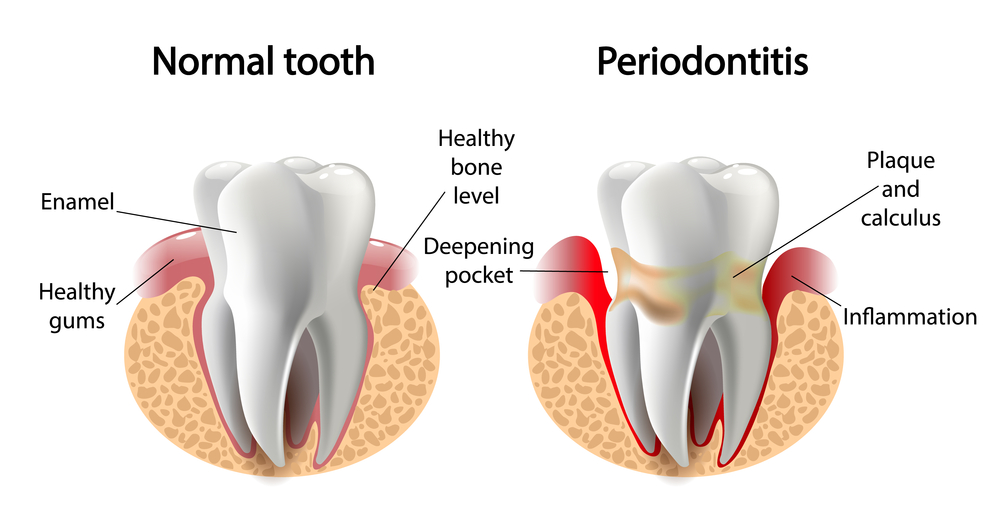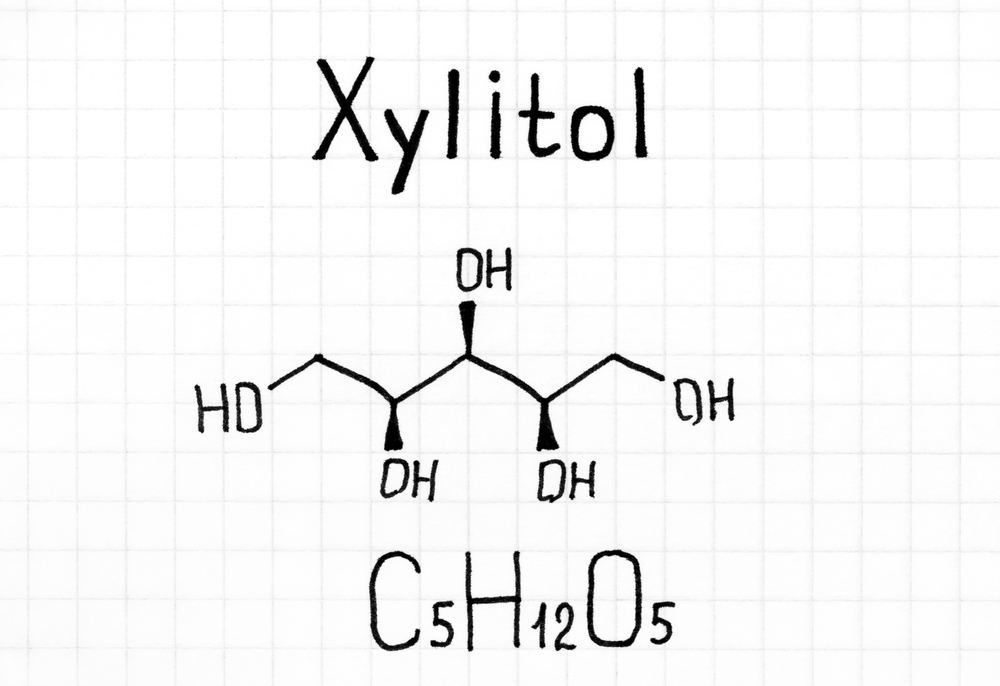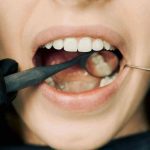The following post is based on the video by Dr. Ellie Phillips, “How to Regrow Receding Gums at Home“.
Dr. Ellie’s YouTube videos are a treasure trove of free information. I started to see positive results after only 3 months of following her advice.
How to Regrow Receding Gums At Home
Despite what your dentist may have told you, it is possible to regrow receding gums at home, and you may be surprised to learn that the solution is not to get regular deep cleaning by a dental professional. It does not require any huge lifestyle changes, either.
If you follow this advice to regrow receding gums, you will also address other issues you may be having including inflammation, pocketing, and bleeding gums, and you will even prevent future issues from developing including cavities.
Before discussing how to regrow receding gums, it is important to separate fact from fiction when it comes to your oral health and gums.
Common Misconceptions About Gum Recession
If you have a receding gum line, chances are, your dentist will explain this in one of two ways:
- You are brushing too aggressively, damaging the gum line and causing inflammation and gum recession.
- You are grinding your teeth and this is weakening your teeth and your gums.
Let’s address these two points and finally put to rest some common misconceptions that many people have.
Brushing Too Aggressively
Your enamel, the outermost layer of your tooth, is extremely hard. It is not possible to brush your enamel away with a toothbrush. Even the most coarse toothbrush and aggressive tooth brushing could not accomplish this.
If the soft tissue of your gums is already damaged and inflamed, however, then brushing aggressively around that area is going to cause further damage. It’s like aggravating a wound repeatedly by poking it with a stick. Of course, it is going to do damage and be painful as well.
But as far as gum recession goes, the root cause of your gum recession is not aggressive brushing, so it is best to put that notion aside for good.
Furthermore, your dentist or dental hygienist may recommend a soft-bristled toothbrush to avoid further recession.
A soft-bristled toothbrush is good, but not for the reasons your dentist is telling you.
Grinding Your Teeth
It’s possible that grinding causes your teeth to bend and flex and ultimately break off small crystals in your enamel. If these crystals start breaking off at the gum line, this can create problems at the point where your gum line meets the tooth, and eventually cause your gums to recede.
On top of that, as your gums recede toward the tooth roots of your tooth, you may start to experience tooth sensitivity in that area.
The root cause of gum recession, however, is not because you grind your teeth. If you had strong, healthy enamel covering your teeth, those small crystals would not break off in the first place.
For long-lasting oral health, you need to consider the root cause of gum recession, and not only the symptoms. Only then will you know the best way to proceed and what your treatment options are.
The Root Causes of Gum Recession
Identifying the cause of gum recession starts with examining the acidity level of your mouth.

Photo: Normal tooth vs Periodontitis (gum inflammation)
Do any of these factors relate to you?
- Do you sip acidic beverages or eat snacks throughout the day?
- Do you whiten your teeth?
- Do you eat citrus fruits or drink smoothies outside of meal times?
- Are you rinsing with acidic mouthwash containing chlorhexidine?
- Do you suffer from acid reflux?
These are only some examples of behaviors that cause your mouth to be too acidic.
It’s natural for your mouth’s acidity level to fluctuate throughout the day. Almost everything you eat and drink will create a more acidic environment in your mouth and sipping on coffee or tea, for example, will sustain this acidity.
But you are bathing your teeth in acid if you don’t manage the pH in your mouth throughout the day.
Acid erodes the protective enamel covering your teeth, and when this erosion of the tooth happens at the gum line, all sorts of bad things begin to happen and can lead to an exposed tooth root and gradual bone loss.
The good biofilm covering a healthy tooth is stripped away and this is when harmful bacteria, stimulated by sugary foods, start to work hard to eat away at your once-healthy gums.
The acid in your mouth has further-reaching consequences than your gums. Tiny pores can form in your teeth as a result of exposure to acid and these pores can lead to sensitivity to extreme temperature and sweet food and drinks. Teeth staining can also occur as a result of tea or coffee accessing the inner layers of your teeth via these pores.
As you can see, acid can be destructive to your overall oral health, not just your gums.
Stop Acid from Destroying Your Teeth and Gums
One factor that is largely overlooked to regrow receding gums is saliva. When it is healthy, your saliva has a naturally healing effect on your teeth and gums. It can remineralize your teeth and strengthen your enamel. Healthy saliva manages the pH level of your mouth and prevents your teeth from acidic food and drink.
The most effective way to avoid gum recession or further gum recession, tooth loss, costly dental care procedures, periodontal disease, and overall dental issues is to stop creating an acidic environment in your mouth.
Your number one defense against this is to protect and nurture the health of your saliva.
Here are strategies to manage acidity that allow you to regrow receding gums and maintain excellent oral health.
Eat Tooth-Protecting Foods
Alkaline foods such as strawberries, blueberries, and raspberries are tooth-protecting and will stave off the damage from acidity in your mouth.

Interestingly, there is some evidence that eating just a little bit of cheese has cariostatic (cavity-preventing) effects. Alkaline foods won’t send the pH balance of your saliva into high acidity and allow it to continue remineralizing your teeth.
Eat Foods to Support a Healthy Gut
Foods such as sauerkraut, pickles, yogurt high in probiotics and low in sugar, and kimchi support a healthy gut. Good digestive health is important to create healthy saliva which is full of nutrients to keep teeth strong and healthy.
Take Mints or Gum Containing Xylitol
The reason foods such as strawberries, blueberries, and raspberries are considered tooth-protecting foods is because they contain xylitol, a naturally occurring compound classified as a sugar alcohol.
When xylitol is taken after eating or drinking, it stimulates saliva production which naturally mineralizes and heals damaged areas of your mouth including teeth and gums.

The good news is, that you don’t have to give up drinking coffee, tea, or even soda. And if you enjoy citrus fruit in the middle of the day, you can keep doing that too.
To avoid creating an acidic and damaging environment in your mouth after these activities, take a xylitol-containing mint or gum.
4 Ways to Regrow Receding Gums at Home
Here are four simple ways you can prevent tooth damage and gum recession from home without expensive products and without going to the dentist:
- Reduce Sipping Drinks & Snacking Throughout the Day
At some point, we were told that sipping water and snacking throughout the day was a good way to avoid dehydration and overeating.
While the advice on proper hydration and healthy eating habits seems to change every few years, the path to good oral health means avoiding sipping drinks and regular snacking.
Intermittent drinking—even water—increases the acidity of your mouth. The same goes for frequent snacking throughout the day.
This doesn’t mean you need to give up on any favorite pastimes like your morning cup of coffee. It just means avoiding sipping on that cup of coffee for an hour or more. Instead, try to limit it to twenty minutes.
If you’re in the habit of eating acidic foods like citrus fruits in between meals, instead have them with or immediately following a meal, or eat them with foods high in protein or fat. This combination will reduce the acidity and lessen the negative impact on your mouth.
- Brush to Stimulate Your Gums & Improve Circulation
Not only is brushing not the cause of gum recession, it is one of the best and easiest solutions to prevent it and to start regrowing your gums.
We have been taught that brushing our teeth helps to prevent tartar and plaque build-up and cavities. The method of brushing that dentists promote involves methodically brushing each tooth at the gum line.
The main benefit of brushing is brushing your gums, not at the gum line but well above and below the gum line, especially around the area where you suffer from severe gum recession, sensitivity, or tooth decay.
Brushing your gums stimulates blood circulation and helps to create more blood vessels which supports the regrowth of gum tissue.
What you need is an antibacterial, soft-bristled toothbrush that has a chance to 100% dry before you use it again. This usually means having two toothbrushes at hand, one for the morning and one to use before you sleep.
If you brush your gums regularly, in about six months, you will start to see your gums transform from red and inflamed to healthy gums that are pink in color and don’t bleed with brushing or even flossing.
- Managing the Acidity of Your Mouth
The most important factor in regrowing receding gums and avoiding future gum recession is managing the acidity of your mouth, specifically, avoiding bathing your teeth in acid. This sounds harsh but this is what you are doing when you eat or drink and don’t do anything to manage the acidity which lingers in your mouth afterwards.
- Practice Good Oral Health at Home
There is no single solution to gum recession unless you practice good oral health at home.
What Dr. Ellie has recommended to all her patients for more than forty years, regardless of what dental issues they have, is a five-minute routine twice a day.
It is called the Complete Mouth Care System, and it works by stimulating your saliva to do what it was meant to do: naturally repair your teeth and gums.
Combine the Complete Mouth Care System with xylitol mints or gum after eating and you will never need another professional cleaning again.
To recap, there are several ways to reduce acidity in your mouth and all of these strategies should be used simultaneously for maximum effect:
- Eat tooth-protecting foods.
- Maintain a healthy gut.
- Take xylitol-containing mints or gum.
- Practice good oral health at home.
Take Control of Your Oral Health
You can regrow receding gums at home, without gum graft surgery or other surgical procedures, but you need to take control of your gum recession before it gets even worse.
Don’t wait until it’s too late. Once a tooth dies, there is no magic cure to bring it back to life.
Caring for your teeth and gums is simpler than you think and with the Complete Mouth Care System and these tips, you will see positive results in as little as one month.
Remember, early intervention will save you a lifetime of suffering, not to mention money you will not have to spend on visits to the dentist.










